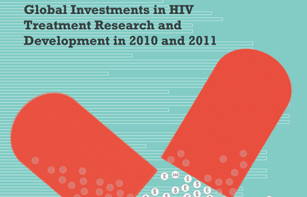In a new UNAIDS funded report the Treatment Action Group (TAG) and AVAC have compiled information on investments into research and development for HIV treatment. The report was put together in a bid to analyse investment trends and highlight any gaps which may become apparent.
Despite having sent surveys to more than 170 institutions, just 41 funders reported their investments in this field of research. Information on investments from the private-sector proved particularly difficult to obtain with many private companies unable to impart funding details of their work in this highly competitive area.
What the report did unveil is that the institutions that responded to the survey invested more than US$ 2.6 billion in HIV treatment research and development in 2011 and that most of that funding came from public-sector funders. Funders from 18 countries reported, with the US National Institutes of Health responsible for 62% of the total reported amount in 2011.
The importance of continued investments to encourage innovation and develop better medicines—ones that have even less side effects and are more resilient to the development of resistance—is incredibly important as it could lead us to our collective goal of ending the epidemic
Bernhard Schwartlander, UNAIDS Director of Evidence, Innovation and Policy
“Investments into developing effective antiretroviral treatment has revolutionized our response to HIV and has saved millions of lives," said Bernhard Schwartlander, Director of Evidence, Innovation and Policy at UNAIDS. “The importance of continued investments to encourage innovation and develop better medicines—ones that have even less side effects and are more resilient to the development of resistance—is incredibly important as it could lead us to our collective goal of ending the epidemic."
The trends which became apparent from the data available were that public-sector funding had increased 6.8% from 2009 to 2010 and then subsequently decreased 1.2% from 2010 to 2011 due to the economic crisis. It also showed that the share of public-sector contribution to the total also decreased—from 75% in 2010 to 69% in 2011.
The report also unveiled encouraging news that the largest share of HIV treatment research and development funding, 52% or US$1.4 billion, was invested in developing new medicines. It also showed that simpler, more effective antiretroviral formulations are in the pipeline and that more effective diagnostic tools are moving towards the market. However, it stressed that ensuring that these life-saving tools become widely accessible will require further commitment to investments in HIV research and development.




